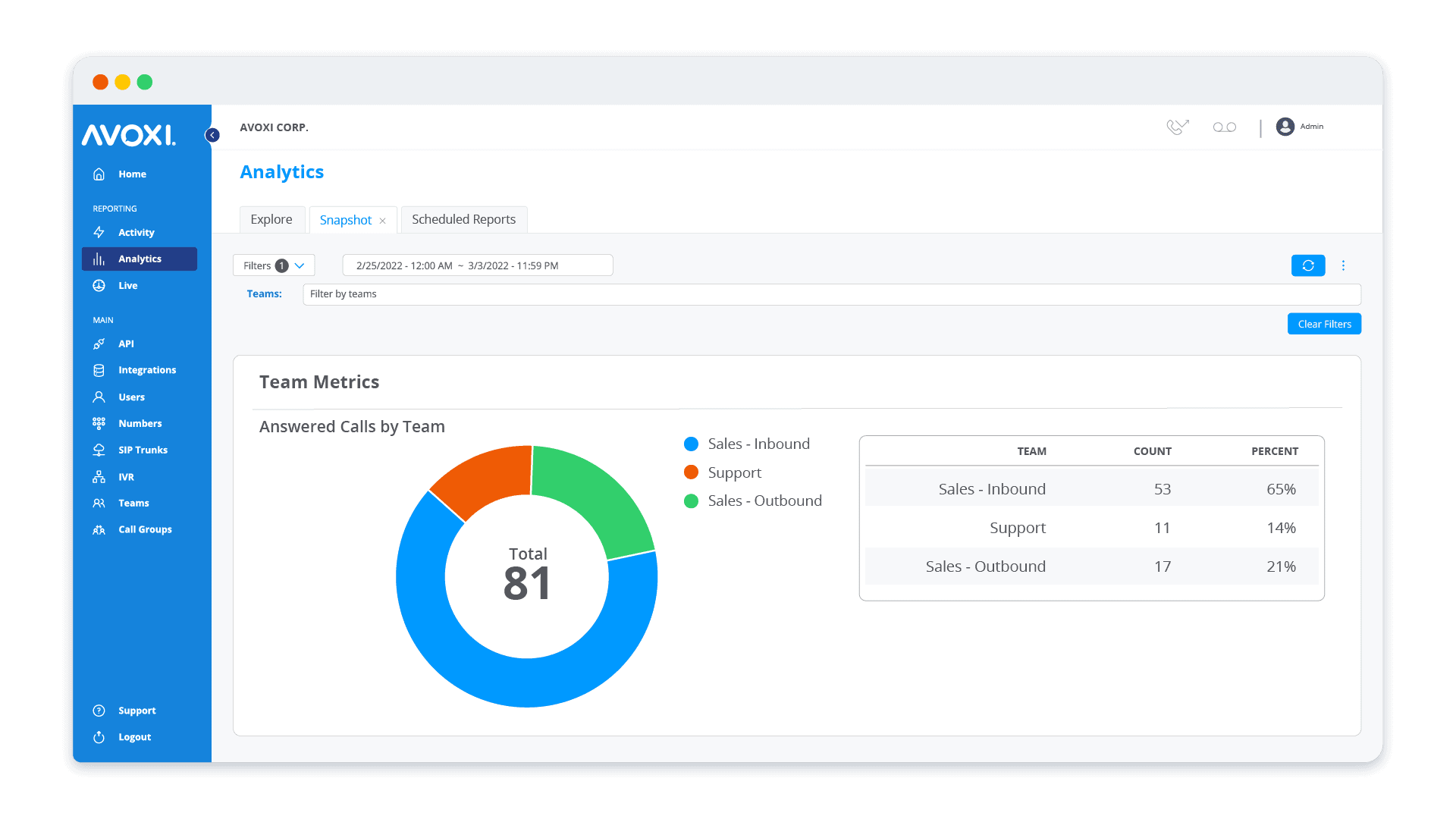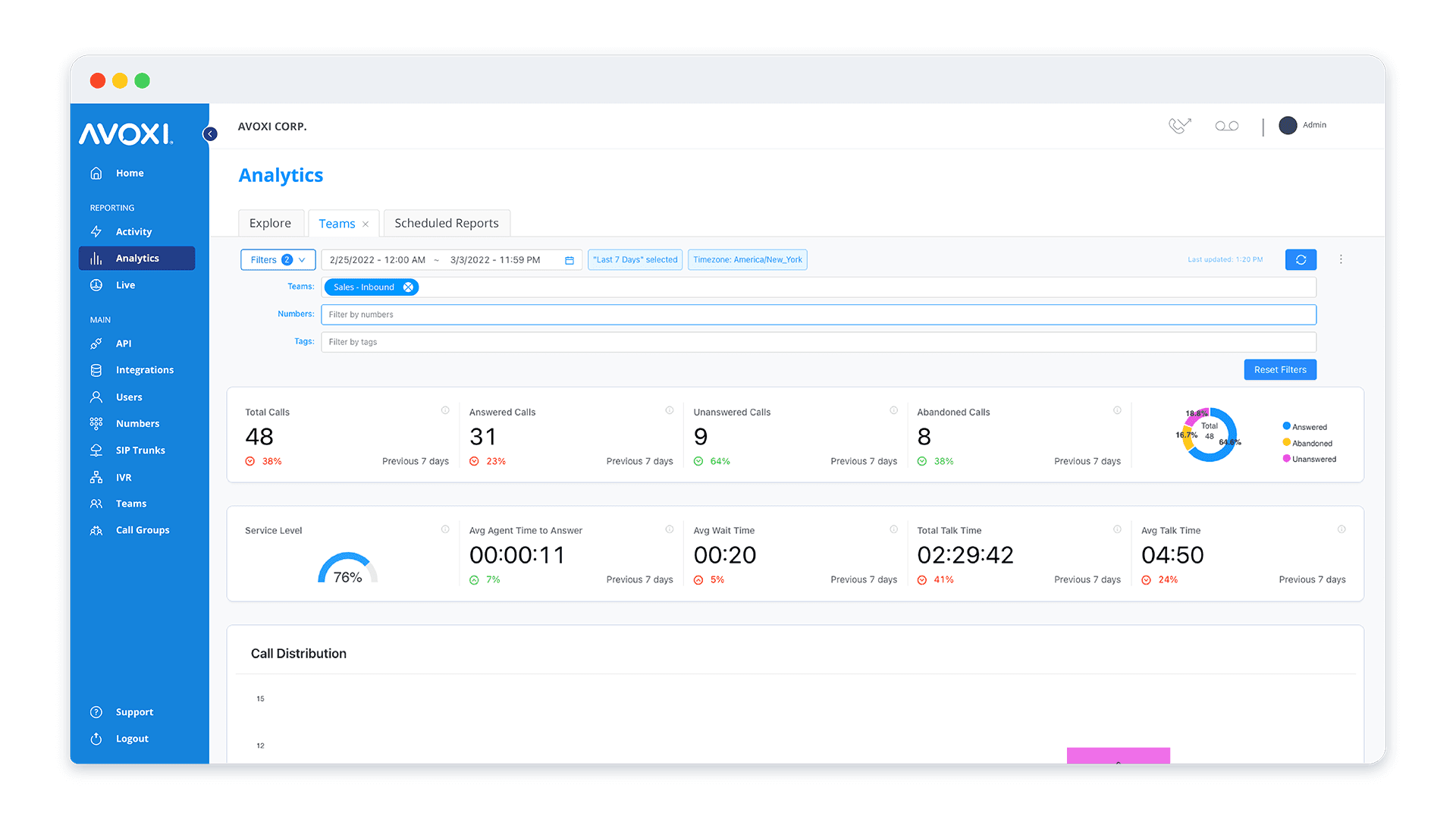The Go-To Call Tracking Guide for B2B Revenue Leaders
Hitting sales and revenue targets is essential for continued growth. To do so, sales teams need strong, highly-engaged SQLs that convert and expand their book of business. Measuring acquisition channels and content can help agents prioritize their conversations with call tracking software.
It’s a competitive market out there for international B2B companies launching into new markets. Doing so takes a strong and thorough go-to-market plan with engaging content and advertising to make those product or service introductions productive for your sales teams and revenue benchmarks.
How your organization advertises can yield better leads. In a lead-gen survey, 59% of higher qualified leads came from inbound marketing compared to outbound at 16%. The remaining leads were curated by sales agents themselves. With so many channels available to drive leads, how can revenue leaders accurately measure campaign effectiveness for their business?
Call tracking - that’s how. And its cloud-native design can easily integrate into your business tech stack, including applications like Google Analytics, AdWords, and CRMs. In this post, we’ll guide you through ways that call tracking can increase better leads and boost your B2B sales.
What is Call Tracking?
Call tracking technology allows revenue professionals to identify marketing advertisements and campaigns that led to an inbound phone lead. It’s an attribution tool that provides data revealing the success of your company’s various campaigns.
Global companies lean on call tracking to measure and analyze their content across the world. When you have a better understanding of what works and what doesn’t, your sales teams are more productive and profitable in their lead conversations.
How Does Call Tracking Work?
It’s a simple process that works within your communications environment. By assigning a VoIP number to an advert or campaign, the software will record helpful information about your incoming calls, including:
- Name, phone number, and location of your lead
- Date, time, and call duration
- Where the caller converted: PPC, SEO, keyword, traditional ad, etc.
What Leveraging Call Tracking Software Can Do for B2B Sales
As a revenue leader, you’re directly measured by the revenue you generate. That’s why it’s essential to equip yourself with technology that can track phone leads converting to paying customers. Call tracking can hold your lead-gen and revenue teams accountable, ensuring what’s being advertised gains a fruitful return.
With this in mind, you can:
Offer actionable insight into campaigns
Call tracking is vital for customer retention and nurturing relationships. By measuring what content and channels drive the most qualified leads, you can easily determine which campaigns stay and which need improving through aggregate reporting.
When integrated with your CRM, your communications platform allows agents to pull caller data and automatically log calls directly from their preferred platform. Logging every interaction is important to customers. 70% agree that awareness of previous conversations is expected to keep their business.
Accelerate lead conversion
Calls convert 15X more than web leads alone, so a modern phone system is necessary to strengthen an active digital presence. Many global businesses use call tracking to quantify their content efficacy and evaluate the quality of keywords, channels, and sources that move their leads down the pipeline.
Increase productivity & ROI
An agent’s performance and high return on investment go hand-in-hand. When an agent performs their best on a call, and the customer feels satisfied, they’re better positioned to make a future sale. Tools such as call recording and call monitoring help facilitate an effective dialogue. When agents can gain perspective from their seasoned peers or support on the line, they can better steer the call to a profitable outcome.
Call tracking enables these other capabilities. With reports and analytics that drill down into prospect geographies and their interests in your business, you can better optimize ad spend, target more engaged buyers, and gain more customers.

Improve the customer experience
Call tracking and its associated communications features can greatly improve the experience your customers have with your brand. Dynamic VoIP numbers affixed to content can help engage and delight your audience.
Customers’ demand for an omnichannel experience is rapidly increasing. DNI call tracking adds context into their journey, making it easier for call center sales teams to streamline processes and build connections that satisfy their customers’ needs - wherever, whenever they need it.

What is Dynamic Number Insertion?
Also known as DNI, dynamic number insertion is a code script that binds your pool of trackable business numbers to a page on your website. Because they’re dynamic, they shift based on unique identifiers from where that visitor converted.
Using DNI, your team can easily attribute sales and revenue from their incoming calls back to the original online or offline ad. You can use DNI in all these call tracking solutions below. Or, if you’re testing out a new channel or ad space, a static number may help “get your feet wet” as you learn this technology.
Types of Call Tracking Solutions
There are several ways to track sales and revenue for inbound calls. Below, let’s take a look at some call tracking solutions that can benefit your teams and produce impressive results.
Keyword Level
Keyword tracking is a fairly simple process that provides the highest level of reporting accuracy around which keywords (search queries) drew in your leads.
Why it matters: Tracking keyword conversion data enables sales agents to align their conversations around the specific product, service, or topic that brought them their prospect. When interactions are productive, your team can move quickly down the sales pipeline.
Channel Based
This call tracking solution measures the channel effectiveness of which the lead converted. With a VoIP number attached to the ad, you can determine which channels are more lucrative than others.
What do we mean by channels?
Digital channels: direct, organic search, paid search, social media, referral sites, and email.
Traditional channels: television, radio, billboards, print media, etc.
Why it matters: As call centers continue unifying communications, sales leaders can evaluate and prioritize the channels that drive higher revenue to their top-performing agents while divesting the channels that don’t deliver.
Source Level
Using source-level call tracking allows sales professionals to see which media and ad sources are the most trafficked and drive the most inbound calls to your business.
What do we mean by sources?
Sources: search engines, social media platforms, review sites, online publications, and various forms of offline advertising.
Why it matters: With several sales and revenue benchmarks to maintain, focusing on the sources with the highest engagement rates can result in more targeted ads that deliver better results.
Visitor Level
When integrated with a CRM, marketing and revenue leaders can pinpoint distinct visitor details and log that information automatically. Additionally, you can also pull data from other events that were triggered on the site, including sign-ups, applications, and start trials.
Why it matters: This information helps sales teams identify emerging opportunities. Cross-referencing call tracking and CRM data helps agents determine if any “new leads” are actually new, or if they can create growth through sales opportunities for existing accounts.
Session Based
Also called session-level call tracking, a phone number is assigned to a webpage for a fixed amount of time (a session) when a visitor converts from a paid or display ad on a search engine. Once a session is over, the phone number goes back into the number pool to be used again.
Why it matters: Session-based call tracking helps leaders monitor and adjust their PPC spend to make more informed decisions on higher-converting keywords. Those savings can then be reallocated to other resources that support the sales team, including additional call tracking phone numbers, call recording, and call quality voice performance tools.
Call Tracking Use-Cases That Work
In B2B sales, your best leads won’t always come from an email or form. Many prospects prefer to pick up the phone and speak with your business directly. Below, we’ve highlighted some use-cases that have worked well for our customers using VoIP call tracking in their inbound communications.
- Bidding on higher-conversion keywords and eliminating spending on those that perform poorly from aggregated data
- Using conversion data to improve lead-gen pages for optimal performance
- Applying phone numbers to retargeting ads and evaluating their efficacy
- Expanding market reach with digital marketing efforts
- A/B test web page designs
- Assign phone numbers to various CTAs across web pages and measure their success
- Designate phone numbers to billboards, posters, Google Ads, and radio to measure traditional vs digital ad conversion
- Using call tracking to demonstrate metric improvements to clients
Call Tracking Features that Increase AOV
Sales agents need to have confidence in their phone system to proactively close sales and increase their average order values. With a modern cloud communications platform like AVOXI, you can help achieve those goals through associated features such as:
- Live Call Coaching. Tools like call monitoring, whisper, and barge support the agents' conversations. Revenue leaders can offer guidance to ensure quality standards are met and sales close.
- CRM Integration. With SIP connectivity, easily integrate call tracking software into your CRM to instantly measure attribution and the customer experience.
- International IVR. Set up unlimited menus that route to users, numbers, groups, queues, or other IVRs around the world. Use skills-based routing to get your callers matched to the best-fit agent quickly.
- Advanced Reporting. Drill down into the data on a single dashboard to measure campaign performance and monitor call activity in real-time.
- Expansive Voice Coverage. Instant-activation, reliable, and trackable VoIP numbers in 170+ countries around the world that reduce TCO.
- Queue Callback. Reduce abandonment and give callers time back in their day if an agent isn’t available. A virtual hold is placed in the queue by the lead, allowing agents to call back and discuss the product or service for a more productive outcome with happier callers.
How Much Does Call Tracking Cost?
The cost for call tracking can vary depending on the provider. Generally, though, you’ll discover the services are mostly listed as subscriptions. Some SaaS companies have positioned their tiered subscriptions to be more inclusive of a hybrid approach, others look at it as a mere base rate - meaning you’ll be required to pay the flat fee and for the trackable numbers and usage accrued.
Furthermore, you may see some providers offering this service as an add-on feature that’s already integrated with a cloud-native platform. At AVOXI, we offer call tracking at $5 per number, per month with a hybrid usage case to bring down total ownership costs and increase overall profitability for our customers.
Grow Customer Retention & Revenue with Call Tracking
Supporting your revenue teams, and confirming KPIs are on the right track, takes robust attribution software that can keep pace with your international organization. In doing so, you can help provide your customers with an excellent experience that can yield a more profitable outcome.

Katharine Kellar
( Director of Marketing Communications )Katharine is the Director of Marketing Communications at AVOXI, bringing over 17 years of experience in nurturing B2B, e-commerce, SaaS, and global brands. Fueled by her relentless drive for growth and an unwavering optimism, she finds joy in every day's silver linings. Outside of her professional achievements, Katharine is a coffee aficionado, savoring the aroma and taste of a freshly brewed cup as she crafts compelling narratives that resonate across diverse markets.